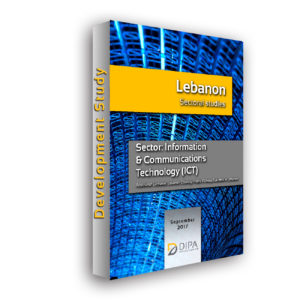 Lebanon is one of the smallest countries in the region, but strategically located on the Eastern Mediterranean, it is an important commercial hub for the Middle East. A heterogeneous country, highly divided along both religious and confessional lines, Lebanon has a relatively young population. The Lebanese system of government reflects a combination of the prime ministerial and presidential systems. A lengthy power vacuum was recently filled with the appointment of Michel Aoun as President and Saad Hariri as Prime Minister.
Lebanon is one of the smallest countries in the region, but strategically located on the Eastern Mediterranean, it is an important commercial hub for the Middle East. A heterogeneous country, highly divided along both religious and confessional lines, Lebanon has a relatively young population. The Lebanese system of government reflects a combination of the prime ministerial and presidential systems. A lengthy power vacuum was recently filled with the appointment of Michel Aoun as President and Saad Hariri as Prime Minister.
The business environment in Lebanon is relatively restrictive, with the World Bank ranking it 126 out of the 189 countries surveyed in its Doing Business 2017. In terms of Global Competitiveness, the World Economic Forum ranks Lebanon as the 101st most competitive nation in the world (out of 138 economies).
ICT is a prioritized strategic industrial sector in Lebanon that witnessed significant growth over the past decade, propelled by massive investments in the sector. ICT’s contribution to GDP is expected to be greater than USD 6 billion by 2017. Computer hardware constitutes the bulk of Lebanon’s ICT market, followed by IT services sub-sector, and software development. Telecommunication is the second income generating sector for Lebanon’s state treasury after the VAT, and the country has a very high mobile telephone penetration rate. This study is a part of the Development Study and analyses the ict sector.
1. Country Profile
1.1 History of Lebanon
1.1.1 Early History
1.1.2 The Civil War
1.1.3 Recent Developments
1.1.4 Relationships with neighbouring states
1.2 Geography
1.2.1 Area and Boundaries
1.2.2 Topography
1.2.3 Land Use and Water Resources
1.2.4 Environmental Concerns
1.3 People and Society
1.3.1 Population and National Identity
1.3.2 Demographics
1.3.3 Societal Characteristics
1.4 Government
1.4.1 Framework of Government
1.4.2 Executive Branch
1.4.3 Legislative Branch
1.4.4 Judicial Branch
1.4.5 Political Parties and Leaders
1.5 Main Infrastructure
1.5.1 Transportation
1.5.2 Tele Communications
1.5.3 Energy
1.6 Key Industries and National Resources
2. Information & Communications Technology
2.1 Regulatory Framework
2.2 Market Size
2.2.1 Computer Hardware
2.2.2 IT Services
2.2.3 Software Development
2.3 Telecommunication Sector
2.4 Human Capital
2.5 Financing
2.6 Competitive landscape
2.6.1 Key Players in Telecommunications Industry
2.6.2 Key Players in Software IT
2.7 Challenges and opportunities
3. Doing Business
3.1 Starting a Business
3.2 Dealing with Construction Permits
3.3 Getting Electricity
3.4 Registering Property
3.5 Getting Credit
3.6 Protecting Minority Investors
3.7 Paying Taxes
3.8 Trading across Borders
3.9 Enforcing Contracts
3.10 Resolving Insolvency
3.11 Measuring competitiveness by the World Economic Forum
3.12 Corruption Index
3.13 Public – Private Partnerships
